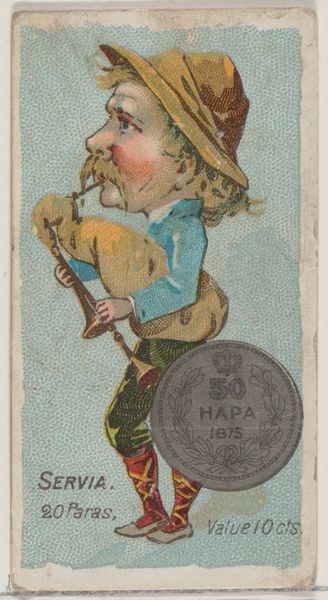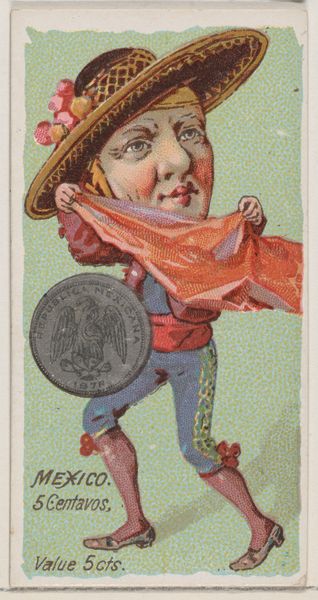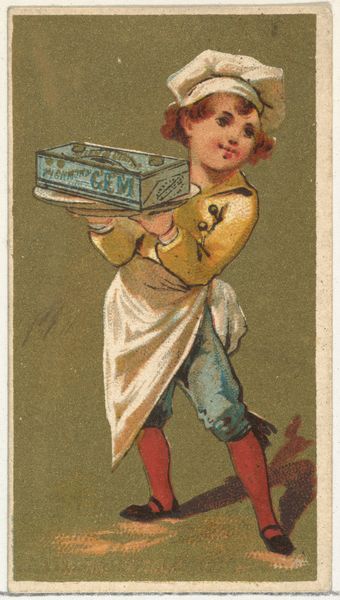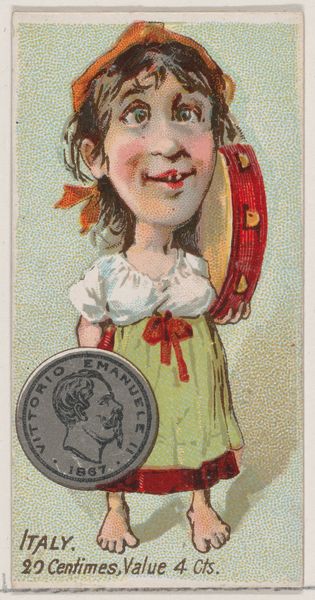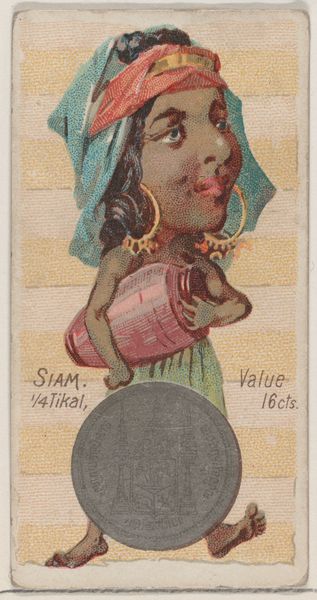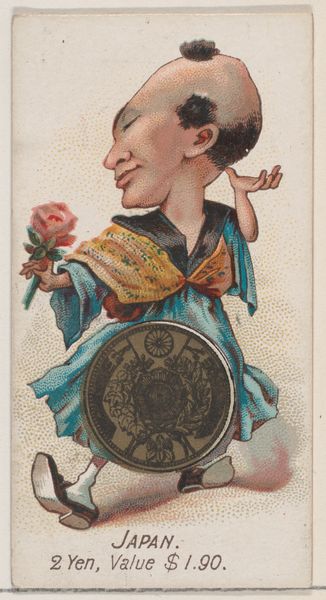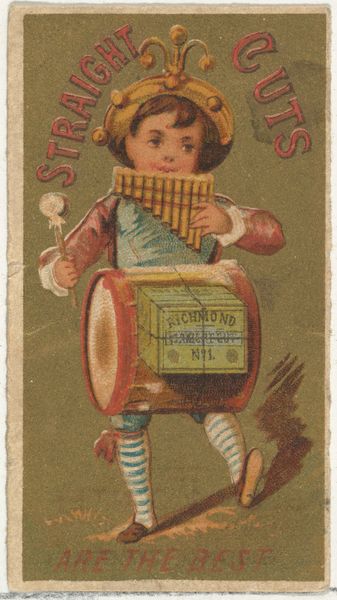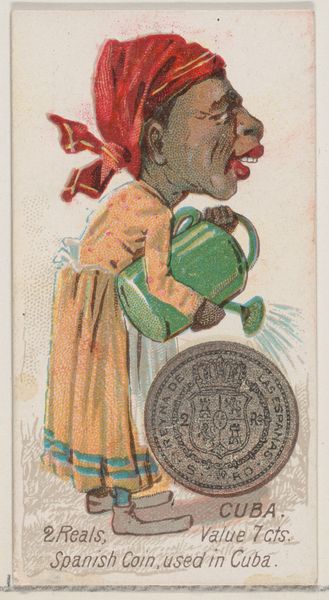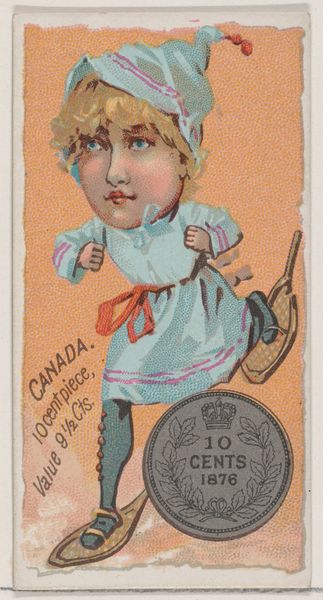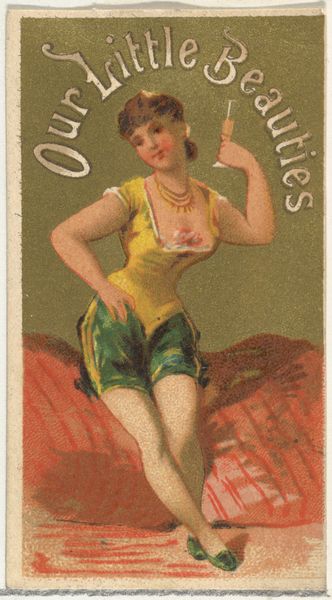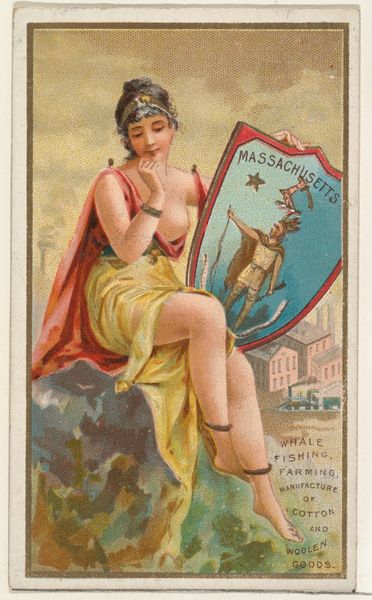
Portugal, 500 Reis, from the series Coins of All Nations (N72, variation 2) for Duke brand cigarettes 1889
0:00
0:00
drawing, coloured-pencil, print
#
portrait
#
drawing
#
coloured-pencil
# print
#
caricature
#
caricature
#
coloured pencil
#
naive art
#
watercolour illustration
#
coin
Dimensions: Sheet: 2 3/4 x 1 1/2 in. (7 x 3.8 cm)
Copyright: Public Domain
Curator: This colour print originates from an 1889 series titled "Coins of All Nations," created for Duke brand cigarettes. Specifically, this piece depicts the 500 Reis coin from Portugal. Editor: The immediate impression is one of rather strange juxtaposition. There’s a crude, almost comical, drawing of a young woman playing an instrument that contrasts with the seemingly technical rendering of the coin itself. The composition feels incredibly loaded. Curator: Indeed. This piece raises interesting questions about artistic labor and commercial production. Cigarette cards, like this one, were mass-produced using inexpensive materials and simple printing techniques. Yet, each one required design, engraving, and printing. It prompts us to ask about the status of “low art” in mass culture at that time. Editor: Right, and framing this within a larger cultural narrative is important, too. These images often exoticized and stereotyped cultures. This illustration flattens a rich Portuguese identity into a kitschy, almost theatrical performance, seemingly intended to encourage both fascination and consumption. What ideological work is that performance actually doing? Curator: We see a combination of drawing and printmaking at work here. It’s made from coloured pencils and other print techniques of the day to produce an eye-catching, if stereotypical, image that would fit into a collector’s set. This card was designed to be discarded but also desirable, fueling consumption through ephemeral artistry. Editor: Absolutely, consider also how the female figure is posed against the coin—her performance almost becomes currency. Gender, nation, and monetary value become entwined, presenting a complicated conversation on commercial and societal values of the period. This reflects a colonial gaze aimed toward the economic potential and exoticized populations that colonizers would seek to “mine” for profit. Curator: A valuable and pertinent connection. Considering the material conditions under which this was created and its function, this speaks to the cultural economy of image production in late 19th-century America. Editor: It's a poignant, though perhaps unintentionally insightful, demonstration of commodification—revealing how entire cultures and identities become reduced to mere tradeable symbols in a growing commercial market. Curator: Examining this piece forces a critical assessment of the artistic and manufacturing landscape of the late 19th century and offers a reminder that cultural productions such as these rarely come to us neutrally. Editor: Agreed. By critically contextualizing "Portugal, 500 Reis," we not only understand the mechanics of mass media of the period, but also shed light on how cultural biases become embedded in consumer culture.
Comments
No comments
Be the first to comment and join the conversation on the ultimate creative platform.
